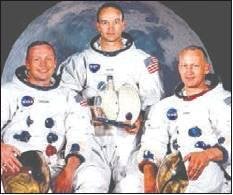One giant step
the editor talks with you
Many of you reading this may not have been alive July 20, 1969, or were too young to recall watching it on TV. Surely you are aware of those …
This item is available in full to subscribers.
Subscribe to continue reading. Already a subscriber? Sign in
Get 50% of all subscriptions for a limited time. Subscribe today.
Please log in to continueNeed an account?
|
One giant step
the editor talks with you
Many of you reading this may not have been alive July 20, 1969, or were too young to recall watching it on TV. Surely you are aware of those thrilling moments when astronauts Neil Armstrong and Edwin “Buzz” Aldrin became the first humans ever to land on our moon. The Apollo 11 mission occurred 8 years after President John F. Kennedy announced a national goal of landing a man on the moon by the end of the 1960s. “I believe this nation should commit itself to achieving the goal, before this decade is out, of landing a man on the moon and returning him safely to Earth,” the President told Congress on May 25, 1961. “Returning safely to Earth’’ I’ve always thought were the most important words.
In 1961, we were trailing the Soviet Union in space. The Soviets launched Sputnik into earth orbit October 4, 1957. I had just returned to the US after almost 2 years in Korea. Carl Wiemar had hired me as an editor at The Greenville News. I vividly remember the Associated Press and United Press bells ringing wildly. Our copy boy handed me the article. In breathless fashion, a space writer announced the Soviets had done the incredible. We were all speechless. In a newsroom that alone is quite an accomplishment although the Soviets didn’t care who they left speechless.
It took 4 years for Washington to respond and 5 more before an international team of scientists and engineers conducted the 1st unmanned mission. Then tragedy struck. On January 27, 1967, at Cape Canaveral, a flash fire erupted during a manned launch test of the Apollo spacecraft and Saturn rocket. Despite the ground crew’s valiant effort to quench the fire, it was too late. Gus Grissom, Ed White and Roger Chafee died. All of us were stunned. Despite the setback, in October 1968 Apollo 7, the 1st manned mission, tested many of the systems needed to conduct a moon landing.
In December 1968, Apollo 8 took 3 astronauts around the dark side of the moon and back. In March 1969 Apollo 9 tested the lunar module for the 1st time in orbit. At 9:32 am July 16, with the world watching, Apollo 11 took off from Kennedy Space Center with astronauts Neil Armstrong, Buzz Aldrin and Michael Collins. Traveling 240,000 miles in 76 hours, Apollo 11 entered lunar orbit July 19. The next day, at 1:46 pm, the lunar module Eagle descended and at 4:17 touched down on the southwestern edge of the Sea of Tranquility. Armstrong radioed to Mission Control in Houston, Texas, a now-famous message: “The Eagle has landed.”
At 10:39 pm., 5 hours ahead of schedule, Armstrong opened the hatch. At 10:56 he stepped off the ladder and radioed to earth, “That’s one small step for a man, one giant leap for mankind.” It was a moment of shared national pride. All of us felt we had “done it” with them. America had not only regained the lead in space but in 22 years the Soviet Union would collapse of its own excesses.
Next: Death sentence
Like what you just read?
You know the story of the Apollo 13 mission. But what of the lessons it taught? For a video, “Apollo 13’s Legacy,” please see https://www.youtube.com/watch?v=GMlljkv_w_8&feature=youtu.be
Other items that may interest you










Comments
No comments on this item Please log in to comment by clicking here